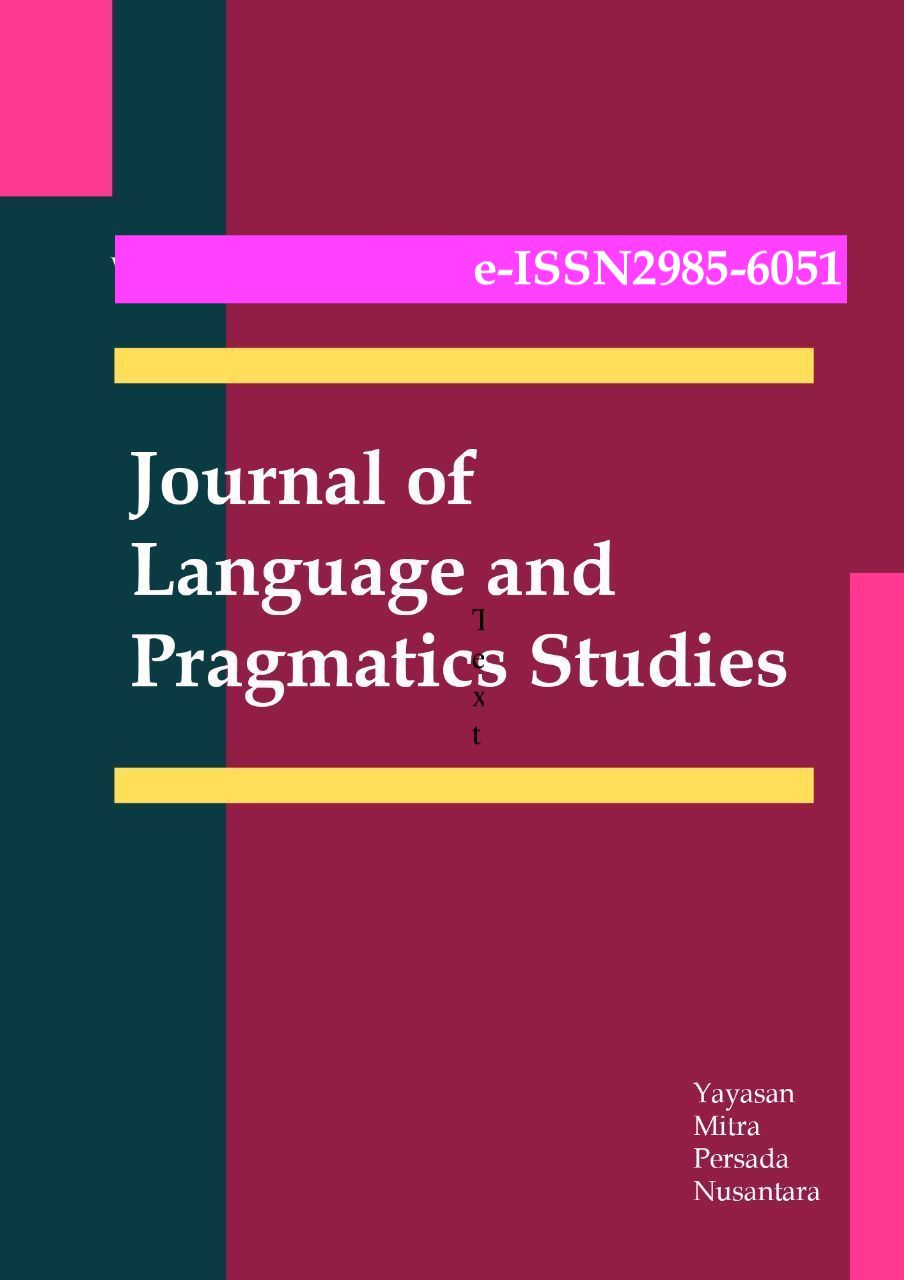Translation machine: an introduction
DOI:
https://doi.org/10.58881/jlps.v1i1.2Keywords:
accuracy of translation, language and machine, translation machine, web systemAbstract
Technology is a benchmark for universal development by providing easy access for users. Technology has also spread to the realm of languages where online translation tools make communication across languages easier. This research aims to provide information about the accuracy of translation in the Indonesian to English using Google Translation and Papago Naver to examine the language use of translation tools for websites. In this paper, we used qualitative methods to support our analysis by comparing both selected tools. The results indicated the quality of online translation tools is ineligible as the language used on the website. Several errors were found, mostly because the system could not recognize pronouns and only translated as according to their literal meaning without considering lexicosemantic. In conclusion, both translation tools have different accuracy levels to translate a variety of text and 50% of it is considered inaccurate which needs to be corrected by replacing each word and editing the whole text. This research is expected to facilitate the translation of words or sentences on a small or large scale and to provide another alternative on switching language use.
References
Abadi, M., Barham, P., Chen, J., Chen, Z., Davis, A., Dean, J., & Zheng, X. (2016). Tensorflow: A system for large-scale machine learning. In 12th {USENIX} symposium on operating systems design and implementation ({OSDI} 16) (pp. 265-283).
Amar, N. (2013). Tingkat Keakuratan Terjemahan Bahasa Inggris Ke Bahasa Indonesia Oleh Google Translate. Madah, 4(1), pp. 82-93.
Ashraf, N., & Ahmad, M. (2015). Machine translation techniques and their comparative study. International Journal of Computer Applications, 125(7).
Atmaja, B, T., Akagi, M., & Elbarougy, R. (2020). Dimensional Speech Emotion Recognition from Acoustic and Text Features using Recurrent Neural Networks. International Journal of Informatics, Information System and Computer Engineering. 1(1), pp. 95-126.
Bahremand, A. (2015). The concept of translation in different teaching approaches and methods. Journal of Social Sciences and Humanities Research, 3(01), pp. 6-10.
Cambridge Dictionary | English Dictionary, Translations & Thesaurus. (2021). Retrieved 23 January 2021, from https://dictionary.cambridge.org/
Catford, J. C. (1965). A Linguistic Theory of Translation; an Essay in Applied Linguistics: By JC Catford. Oxford UP.
Ghasemi, H., & Hashemian, M. (2016). A Comparative Study of" Google Translate" Translations: An Error Analysis of English-to-Persian and Persian-to-English Translations. English Language Teaching, 9(3), pp. 13-17.
Juliarta, IM. (2021). The noun phrase and its translation in the novel “Budha, a story of enlightenment”. Journal Of Applied Studies In Language, 5(1), 10-22. doi:10.31940/jasl.v5i1.2297
Khairani, AI. (2019). Translation techniques of bilingual abstract 'sentrinov' program book. Journal Of Applied Studies In Language, 3(2), 214-220. doi:10.31940/jasl.v3i2.1559
Lee, H. G., Kim, J. S., Shin, J. H., Lee, J., Quan, Y. X., & Jeong, Y. S. (2016). papago: A machine translation service with word sense disambiguation and currency conversion. In Proceedings of COLING 2016, the 26th International Conference on Computational Linguistics: System Demonstrations (pp. 185-188).
Newmark, P. (1988). A Textbook of Translation. London: Prentice Hall.
Rofik, A. (2020). Grammatical accuracy of Indonesian-English translation. Journal Of Applied Studies In Language, 4(2), 321-330. doi:10.31940/jasl.v4i2.2173
Rohman, T. N., Nababan, M., & Santosa, R. (2019). An Analysis of Translation in Translated Drama Script Entitled Waiting for Godot. International Journal of Multicultural and Multireligious Understanding, 6(6), pp. 195-200.
Serbina, T., Hintzen, S., Niemietz, P., & Neumann, S. (2017). Changes of word class during translation–Insights from a combined analysis of corpus, keystroke logging and eye-tracking data. Empirical modelling of translation and interpreting, 7, p. 177.
Silalahi, R. (2009). Dampak teknik, metode, dan ideologi penerjemahan pada kualitas terjemahan teks medical-surgical nursing dalam Bahasa Indonesia. Unpublished Doctoral dissertation). Medan: Universitas Sumatera Utara Indonesia.
Wajdi, M., Sumartana, IM., & Hudiananingsih, NPD. (2018). Avoiding Plagiarism in Writing a Research Paper. Soshum: Jurnal Sosial Dan Humaniora, 8(1), 94-102. doi:10.31940/soshum.v8i1.769
Wu, Y., Schuster, M., Chen, Z., Le, Q. V., Norouzi, M., Macherey, W., ... & Dean, J. (2016). Google's neural machine translation system: Bridging the gap between human and machine translation. arXiv preprint arXiv:1609.08144.
Zulfikar, R., & Putri, AS. (2020). Web-based system for creative writing. Journal Of Applied Studies In Language, 4(2), 144-150. doi:10.31940/jasl.v4i2.1899
Downloads
Published
How to Cite
Issue
Section
License
Copyright (c) 2022 D Fuzianti, T Tawami, R Mardiyani, R Rahmatillah, H Saputra

This work is licensed under a Creative Commons Attribution-NonCommercial-NoDerivatives 4.0 International License.



